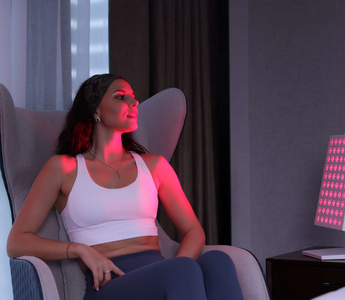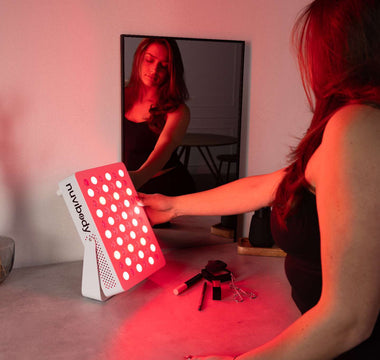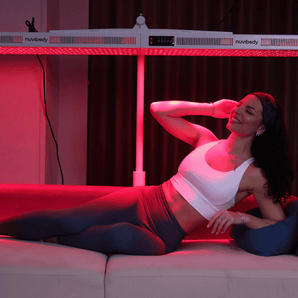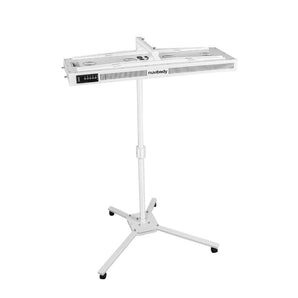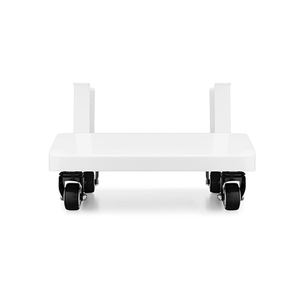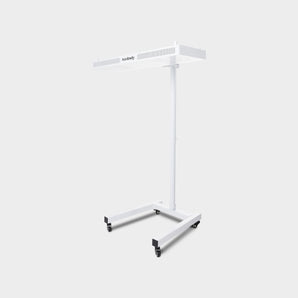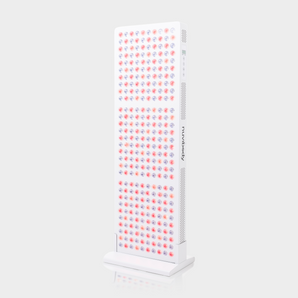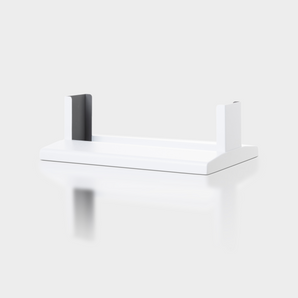There are several approaches to light therapy that promote health and wellbeing, but when choosing a treatment method, it can be tricky to understand which technology will work best for your specific needs. Red light therapy, TDP, and Moxa lamps are often cited as effective ways to relieve pain, speed recovery, and improve overall wellbeing. But how do these methods compare? What are the key differences, and which is right for you? We explore the scientific evidence and practical applications of these therapies to help you make an informed choice.
What is red light therapy?
Red light therapy uses specific wavelengths of light, usually between 630-850 nm, to stimulate cells and promote regeneration. It works by using light to activate the mitochondria in cells, which increases the production of ATP (adenosine triphosphate), the energy source for virtually all cellular processes. This technique has proven benefits , including reducing inflammation, improving skin condition, speeding up muscle recovery, and relieving pain.
When using red light therapy lamps , red light therapy can be easily applied at home. Due to its direct and efficient effect on the cells, it provides fast results with consistent use.

What are TDP lamps?
TDP lamps, also known as "infrared mineral lamps" , use infrared light in combination with a special mineral plate. This plate generates a broad spectrum of infrared radiation that can reach the deep tissues of the body. TDP therapy is often used for pain relief, improving blood circulation and reducing inflammation. The idea behind TDP is that the minerals in the plate help to accelerate the healing process by releasing specific minerals during the treatment, which contributes to the therapeutic effects.
TDP lamps are often used in professional treatment settings, but they can also be purchased for home use. The effect of TDP lamps is often gentler than red light therapy, and the treatment time can be longer, with an emphasis on deep, prolonged stimulation.
What are Moxa lamps?
Moxa lamps (or moxibustion) are based on a traditional Chinese medicine practice of burning moxa, an herbal mixture made from mugwort, to promote energy in the body. In modern practice of moxibustion, moxa is often burned near specific acupuncture points on the body, or in some cases, the use of an infrared lamp is combined with moxa to enhance its effectiveness.
Moxa is often used to help relieve pain, improve circulation, and promote overall vitality. The treatment may feel a little more intense, as the heat generated by the moxa penetrates deeply into the body. In many cases, the goal of the therapy is to harmonize the “Qi” (life energy), which can help restore balance to the body.
Comparison of Red Light Therapy, TDP and Moxa Lamps
While red light therapy, TDP, and Moxa lamps all offer similar pain relief and wellness benefits, there are some key differences that may influence your choice.
- Depth of penetration and mechanism of action
- Red light therapy is aimed at stimulating the mitochondria in the cells and works on the superficial to middle layers of the skin and underlying tissue. It is particularly effective for skin improvement, muscle recovery and pain relief.
- TDP lamps can penetrate deeper into tissues than red light, making them suitable for deeper pain or muscle and joint pain. However, for many people, red light therapy often offers more effective and targeted results in treating pain and recovery.
- Moxa lamps generate heat and energy that helps improve circulation and promote Qi flow, but typically work in a more holistic way, focused on overall well-being.
- Therapeutic effect
- Red light therapy has been proven in clinical studies for a wide range of applications, such as pain relief, inflammation reduction and muscle recovery. It provides immediate effects through increased ATP production.
- TDP lamps focus more on stimulating blood circulation and relieving pain, but the scientific basis is less extensive than with red light therapy.
- Moxa lamps have traditionally focused more on the energetic balance of the body, and while there are benefits for pain and inflammation, the scientific evidence for the effectiveness of moxa therapy is more limited.
- User experience and application
- Red light therapy is easy to use, especially with red light therapy lamps like Nuvibody, which offer powerful results for both professionals and home users. Treatments are short and direct, which is ideal for those looking for fast results without lengthy sessions.
- TDP lamps tend to be larger and require more time per session. They are less user-friendly for those looking for a quick treatment.
- Moxa lamps can take a little more time and patience, mainly due to the heat generated by the moxa and the need to hold the lamp close to the skin for proper therapeutic effects.
Where does red light therapy fit into your routine?
If you’re looking to relieve pain, boost your energy, improve your skin, or recover from injuries faster, red light therapy may be an ideal choice. It offers the potential to improve your well-being in an efficient and scientifically proven way, with devices such as the Nuvibody™ LITE 300 Watt or Nuvibody™ CORE 300 Watt offering simple and flexible treatments.

Conclusion: which technology suits you?
While red light therapy, TDP, and Moxa lamps can all be powerful tools for promoting your health, the choice of which option is best for you comes down to your personal needs and preferences. Red light therapy offers fast and targeted results, while TDP lamps can be suitable for deeper issues, and Moxa lamps offer a holistic approach focused on energetic restoration.
If you are specifically looking for an effective, scientifically backed method, red light therapy may be the right choice for you. Choose a high-quality red light therapy lamp for the best results. Try it yourself and experience how light therapy can improve your health!
Frequently Asked Questions
- What is the difference between red light therapy, TDP lamps and Moxa lamps?
Red light therapy, TDP lamps, and Moxa lamps are three different therapies that are commonly used for pain relief, muscle recovery, and overall wellness. Red light therapy works by stimulating cells with specific wavelengths of light, TDP lamps use infrared light combined with minerals to reach deeper tissues, and Moxa lamps use herbal blends such as mugwort to promote energy in the body. The choice depends on your specific health needs and preferences. - Which therapy is best for me: red light therapy, TDP lamps or Moxa lamps?
The choice between these therapies depends on your specific needs. Red light therapy is ideal for fast and targeted results, especially for pain relief, muscle recovery and skin improvement. TDP lamps are better for deeper tissue treatments and can be useful for chronic pain. Moxa lamps offer a holistic approach and focus on the energetic recovery of the body. Depending on your goals, you can choose the most suitable technology. - How deeply does red light therapy penetrate the body?
Red light therapy penetrates the superficial to middle layers of the skin and underlying tissue. It is particularly effective for improving skin, accelerating muscle recovery and relieving pain. Because it activates the mitochondria in the cells, it promotes ATP production, which helps in cell and tissue repair. - How long should a session last with TDP lamps?
TDP lamps generally require longer sessions than red light therapy. Treatment time varies, but can last between 20 and 40 minutes, depending on the size of the treated area and the intensity of the lamp. TDP therapy targets deeper tissues and takes time to achieve the desired effect. - Which therapy is best for muscle recovery after intense training?
Red light therapy is particularly effective for muscle recovery after intense exercise, as it quickly activates the mitochondria in muscle cells and increases ATP production. This promotes recovery and reduces inflammation. TDP lamps can also be helpful for deeper muscle pain, but the effects are typically slower than red light therapy. Moxibustion takes a more holistic approach and can help with general relaxation and promote energy flow in the body. - Can Red Light Therapy, TDP Lamps, and Moxa Lamps Help Improve Sleep Quality?
Red light therapy has been shown to be effective in improving sleep quality by promoting the production of melatonin, the hormone that helps regulate the sleep cycle. TDP lamps can improve circulation and promote relaxation, which can also indirectly help with a better night’s sleep. Moxa therapy can also help to calm the body and mind through its relaxing warmth and stimulation of Qi, which can promote sleep.


